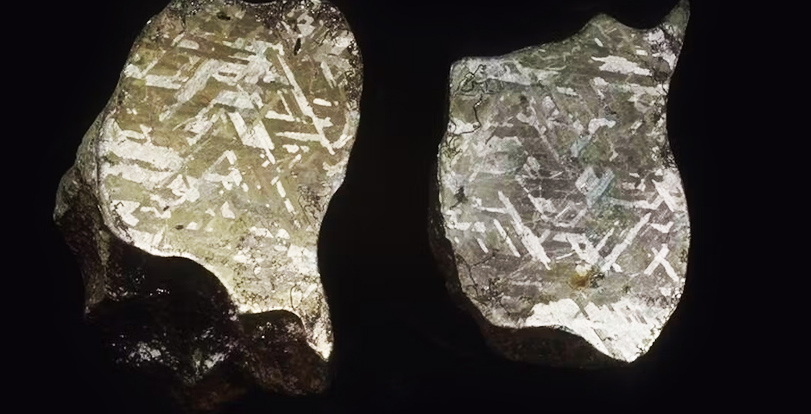
Mysterious Fragments of Glass in Australian Outback Have Cosmic Origins in 5,000 Year Old Meteorite Science Alert - April 7, 2024

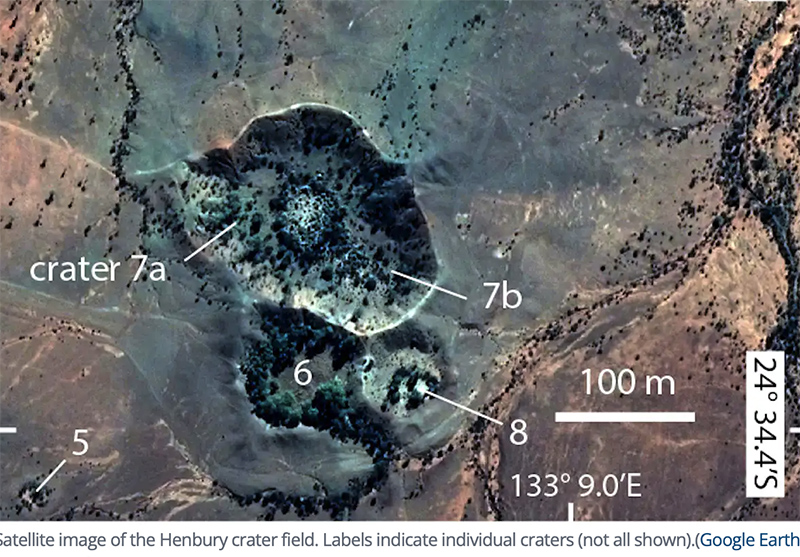
Glass occurs in nature, too. Most of it is obsidian, the glass produced in volcanoes which has been known since ancient times. When the space rock struck at Henbury, the heat of the impact melted the meteorite along with rock from the ground. Some of this fused material formed molten droplets which was thrown from the craters and cooled to form thumb-sized lumps that look a lot like volcanic glass.
Strange Metal From A Meteor Beyond Our World Found in Ancient Treasure Stash Science Alert - February 23, 2024
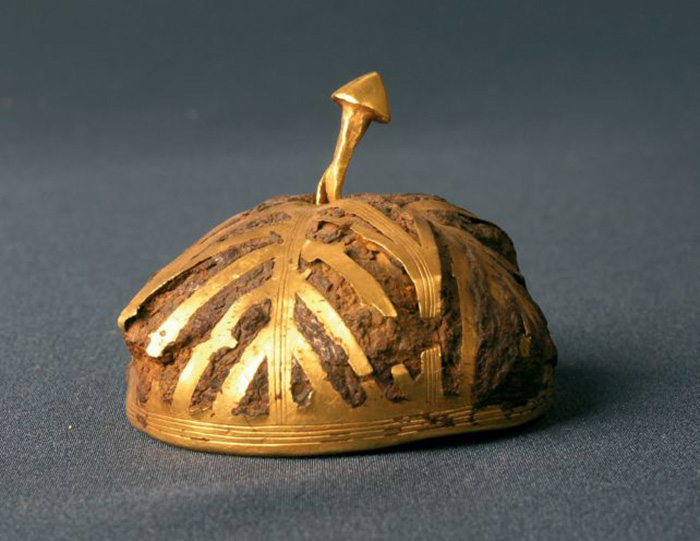
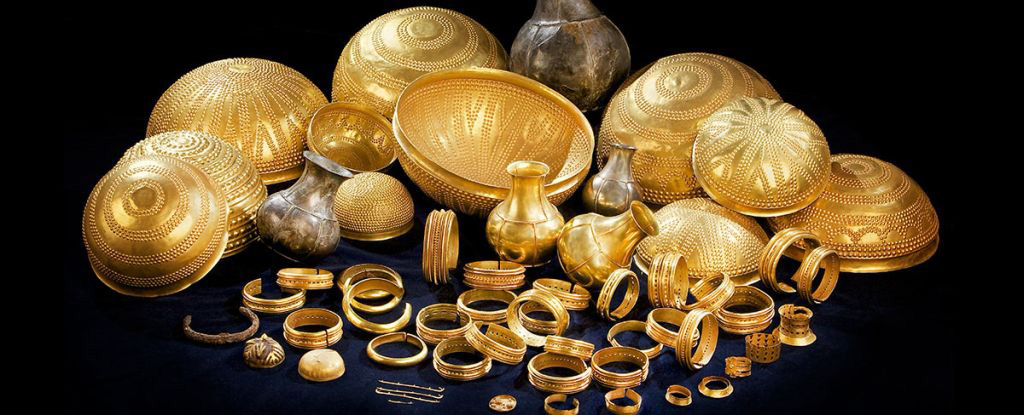
There's a number of pre-Iron Age iron artifacts around the world that were forged from the stuff of meteorites. Perhaps most famous is the meteoritic iron dagger of Pharaoh Tutankhamun, but there are other Bronze Age weapons made of the material, and they were very highly prized. Amidst a cache of glittering golden treasures from the Iberian Bronze Age, a pair of corroded objects might be the most precious of all.
Material Found in Ocean Is Not From This Solar System, Study Claims Science Alert - September 1, 2023
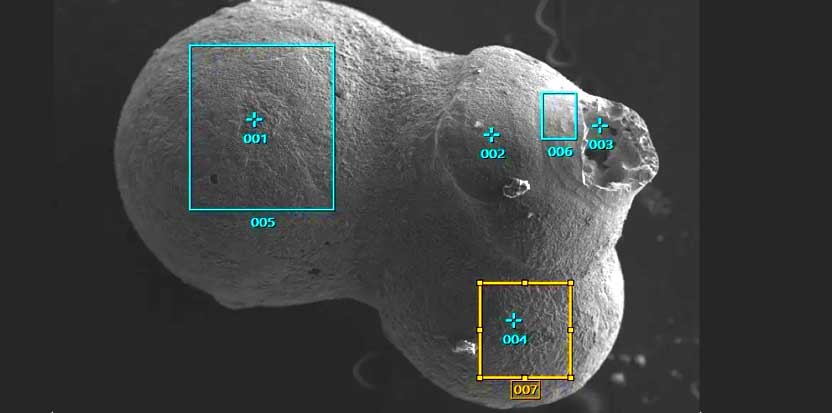
A sprinkling of tiny beads recovered off the coast of Papua New Guinea might have come from a rock with a rather interesting history having crossed light years of space from its origin around a star that's not our Sun
This Ancient Meteorite Is A Time Capsule From The Birth of Our Solar System Science Alert - August 29, 2023
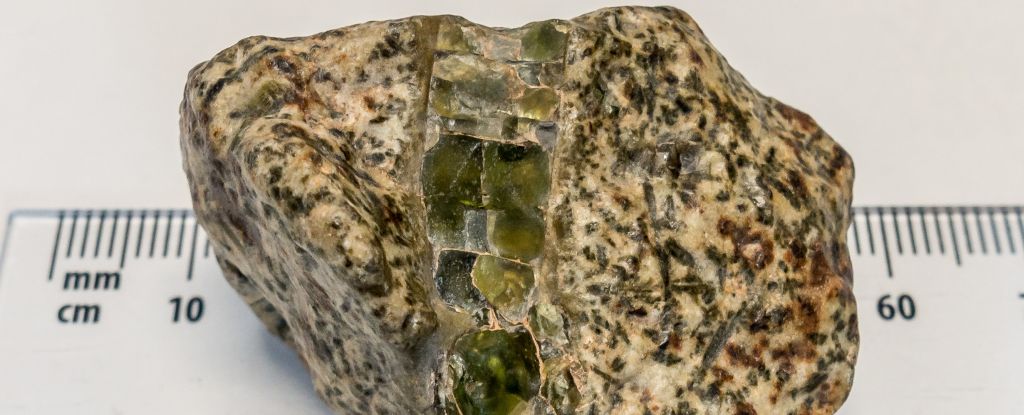
A piece of ancient space rock that ended up on Earth is giving scientists the clues they need to understand the cloud of dust from which the Solar System was born. The rare object is known as Erg Chech 002, and an isotope contained within it suggests a sprinkling of radioactive material from recently exploded stars infused with our Solar System towards the end of its formation.
Man Uses Strange Rock as Doorstop For Decades. It Turned Out to Be Worth a Fortune. Science Alert - August 16, 2023
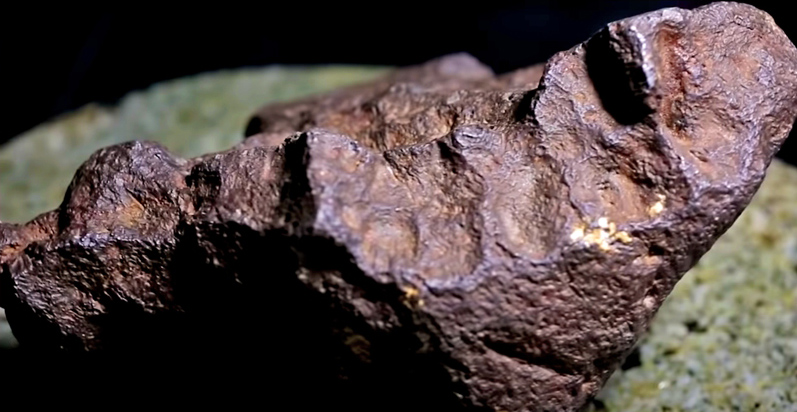
One of the largest meteorites ever recorded in Michigan never came to the attention of experts until a whopping 80+ years after its discovery
This Meteorite Left Earth. Thousands of Years Later, It Came Back. And there's more. Science Alert - July 14, 2023
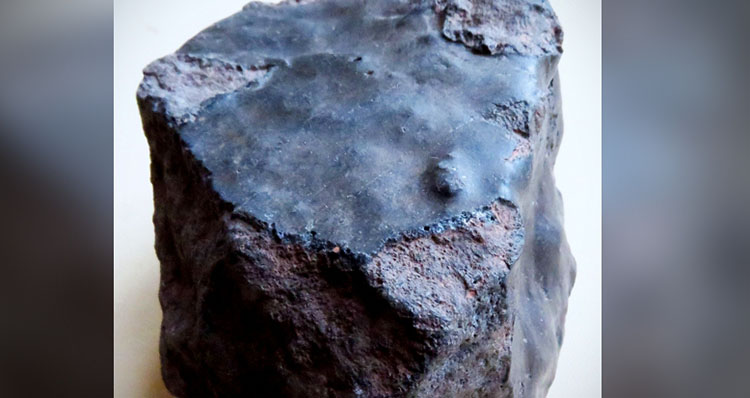
That this 646-gram 'boomerang space rock' might've made a celestial excursion isn't the only strange thing about it. Throw in its mix of oxygen isotopes and signature of trace elements, and it becomes highly doubtful that this rock is a meteorite. At least, not your typical space-rock variety.
World's 1st 'boomerang meteorite' - a rock that left Earth, spent millennia in space, then returned - possibly discovered in the Sahara Desert Live Science - July 26, 2023
17-pound meteorite found in Antarctica, likely hidden for millennia, is perfectly intact Live Science - February 3, 2023
On a recent expedition to Antarctica, researchers discovered five perfectly-preserved meteorites that have likely been hiding beneath the ice for thousands of years. Scientists recently scooped up one of the heaviest meteorites ever discovered in Antarctica, as well as four other frozen space rocks that likely crashed into the icy continent thousands of years ago. The researchers found the minihoard of meteorites on the surface of the Nils Larsen blue ice zone near the Belgian-owned Princess Elisabeth Antarctica station. Of the five meteorites, the standout was a cantaloupe-size rock that weighed a whopping 16.7 pounds (7.6 kilograms). Of the 45,000 meteorites discovered in Antarctica, only around 100 have been as heavy as this cosmic cannonball.
A new study into the Tissint meteorite, which crash-landed in Morocco in 2011, revealed a wide array of organic compounds hidden in the rare space rock. Live Science - January 19, 2023
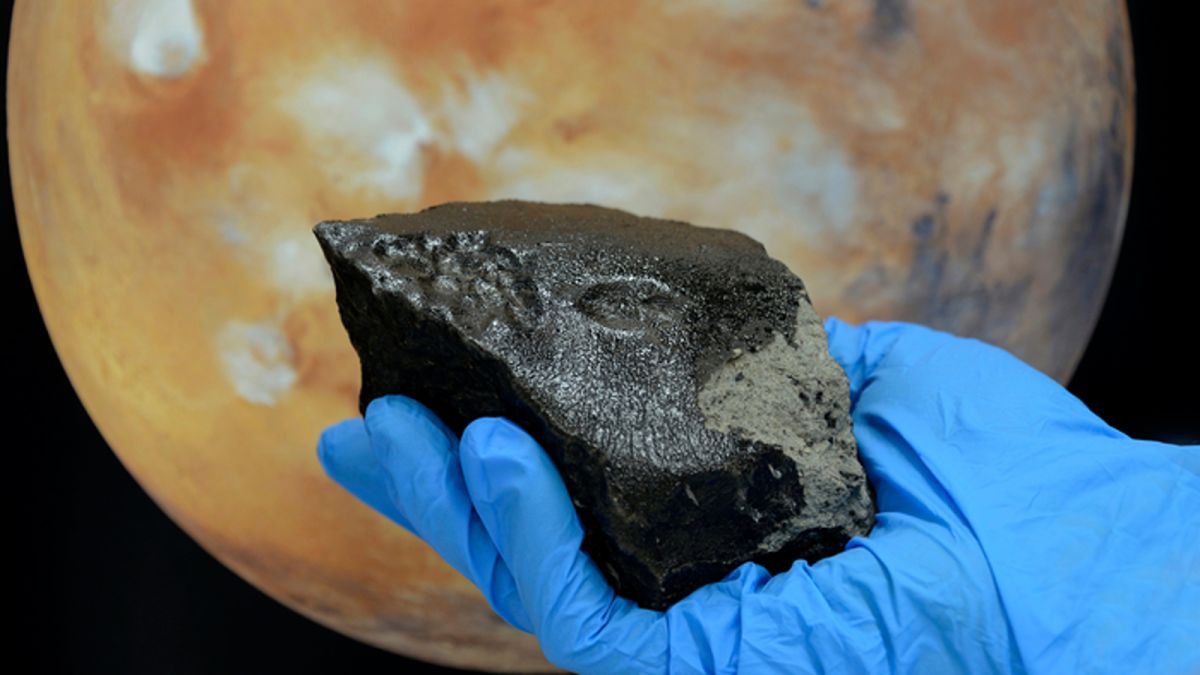
A Martian meteorite that crashed to Earth 12 years ago contains a "huge diversity" of organic compounds, including one that has never been seen on Mars before, a new study has found. The findings The Tissint meteorite broke apart in the sky above the city of Tissint in Morocco on July 18, 2011, showering fragments of the space rock across the surrounding desert. The meteorite, which formed on Mars hundreds of millions of years ago, was likely ejected from our cosmic next-door neighbor by a cataclysmic event before being caught in Earth's gravitational field. It is one of only five Martian meteorites witnessed by people as it crashed into our planet.could help scientists understand more about the Red PlanetÕs habitability and whether it potentially once harbored life.
Two minerals never before been seen on Earth found inside 17-ton meteorite Live Science - November 28, 2022
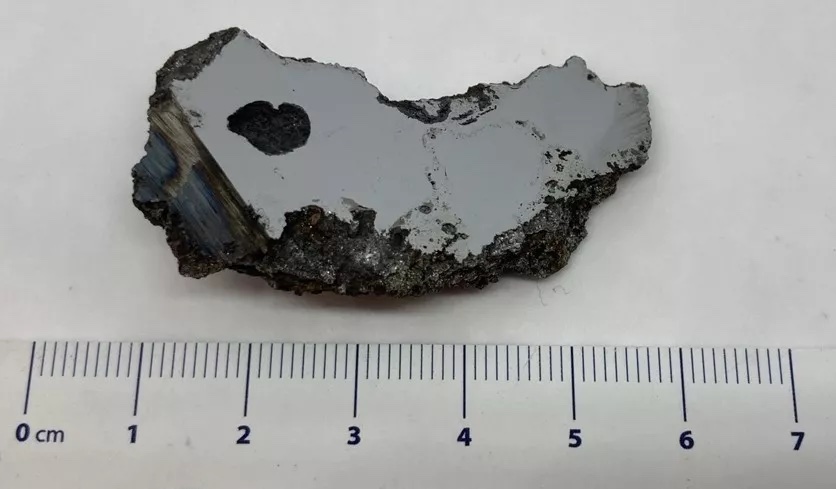
Two minerals that have never been seen before on Earth have been discovered inside a massive meteorite in Somalia. They could hold important clues to how asteroids form. The two brand new minerals were found inside a single 2.5 ounce (70 gram) slice taken from the 16.5 ton (15 metric tons) El Ali meteorite, which crashed to Earth in 2020. Scientists named the minerals elaliite after the meteor and elkinstantonite after Lindy Elkins-Tanton (opens in new tab), the managing director of the Arizona State University Interplanetary Initiative and principal investigator of NASA's upcoming Psyche mission, which will send a probe to investigate the mineral-rich Psyche asteroid for evidence of how our solar system's planets formed.
Eerie green fireball detected hours before smashing into Lake Ontario in the dead of night Live Science - November 22, 2022
A renegade meteor flared in Earth's atmosphere in the wee hours of Nov. 19, creating a bright green fireball in the sky over the eastern US and Canada. This fireball was a small meteor, detected by astronomers just three hours before it tumbled through Earth's atmosphere, caught fire and broke up into hundreds of pieces. Most of those pieces likely smacked straight into Lake Ontario, though some small chunks may have impacted land on the lake's southern shore, according to NASA.
Asteroid 2022 WJ1 impacts Earth over Niagara Falls, becoming the 6th asteroid to be detected before impact Watchers - November 20, 2022
A newly-discovered asteroid designated 2022 WJ1 impacted Earth's atmosphere over Niagara Falls at 08:27 UTC on November 19, 2022, becoming the 6th asteroid to be discovered before impacting Earth.
2022 WJ1 was a tiny asteroid on a collision course with Earth. But astronomers saw it coming, and NASA's Scout impact hazard assessment system calculated where it would hit Live Science - November 23, 2022
A space rock, recovered from the Western Sahara of Africa in 2011, formed 4.5 billion years ago and slammed into Earth after an asteroid impact sent it flying across space five to ten million years ago Smithsonian - July 15, 2022
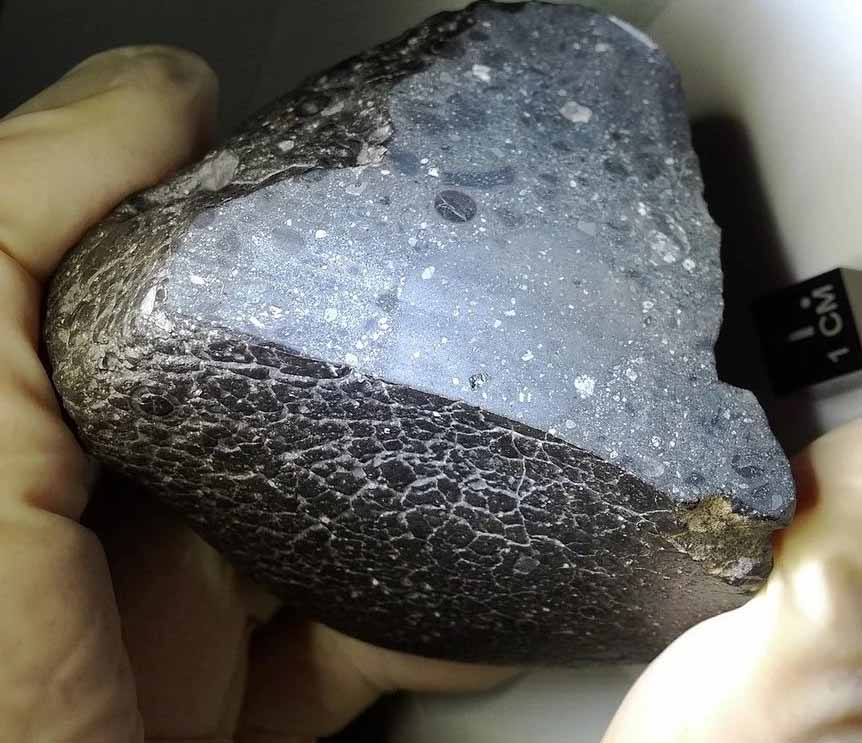
This goes to #5 on my list of the Origins of Covid
Never-before-seen crystals found in perfectly preserved meteorite dust Live Science - July 1, 2022
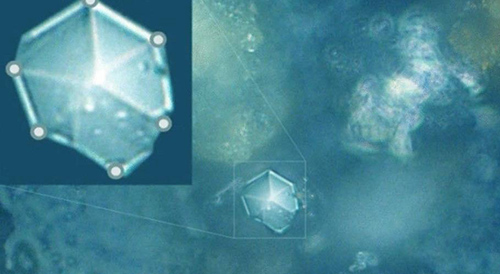
Researchers have discovered never-before-seen types of crystal hidden in tiny grains of perfectly preserved meteorite dust. The dust was left behind by a massive space rock that exploded over Chelyabinsk, Russia, nine years ago.
Meteorites could have brought all 5 genetic 'letters' of DNA to early Earth Space.com - April 26, 2022
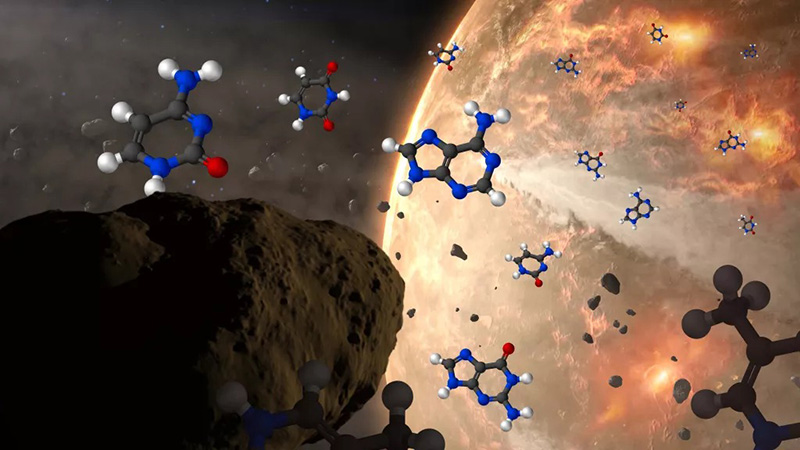
In this conceptual image of meteoroids delivering nucleobases to ancient Earth, the nucleobases are represented by structural diagrams with hydrogen atoms as white spheres, carbon as black, nitrogen as blue and oxygen as red. (Image credit: NASA Goddard/CI Lab/Dan Gallagher). Key building blocks of DNA that previous research mysteriously failed to discover in meteorites have now been discovered in space rocks, suggesting that cosmic impacts might once have helped deliver these vital ingredients of life to ancient Earth.
Scientists find liquid water inside a meteorite, revealing clues about the early solar system Space.com - May 12, 2021
Scientists have spotted water in a primitive meteorite, expanding our understanding of the ancient solar system. Water is abundant in our solar system - from the icy rings of Saturn to the subsurface water on its moon Enceladus and the liquid water and ice detected on Mars, water is known to exist beyond Earth. However, while scientists have suspected that water is preserved in a type of meteorite known as carbonaceous chondrites, they have never discovered liquid water in these rocks - until now. In a new study, researchers detected small pockets of carbon dioxide-rich liquid water in a meteorite hailing from the early solar system. This new work is expanding our understanding of how planets evolved in our solar system as this type of meteorite water could have contributed to water on planet Earth long ago.
Meteorite that landed in Botswana tracked to its birthplace in the asteroid belt Live Science - May 1, 2021
A small asteroid barreled through the sky and burned up over the Kalahari Desert of Botswana in the summer of 2018 and now, scientists suspect that the space rock originated from Vesta, the second largest asteroid in the solar system. The small asteroid, named 2018 LA, was first observed through a telescope at the University of Arizona's Catalina Sky Survey and looked like a speck of light whizzing through the stars, according to a statement from the SETI Institute. This is only the second time we have spotted an asteroid in space before it hit Earth over land, Peter Jenniskens, a SETI Institute meteor astronomer, said in the statement. The first was asteroid 2008 TC3 in Sudan 10 years earlier.
Evidence of water movement found in meteorites that only recently fell to Earth PhysOrg - January 8, 2021
A team of researchers affiliated has found evidence of relatively recent water movement in meteorites that only recently collided with the Earth. A lot of scientists believe that the water present on Earth came from meteorites. This theory has been difficult to prove because the meteorites recovered to date do not contain water and because chemical reactions that might have involved comet-borne water occurred millions of years ago. In this new effort, the researchers took a look at the idea from another angle - they studied isotopes in meteorites that have landed on Earth over just the past century.
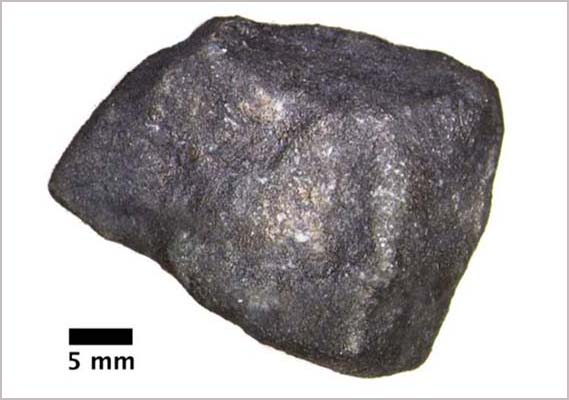
'Fireball' meteorite that crashed in Michigan holds extraterrestrial organic compounds Live Science - October 28, 2020
Theory of Panspermia - Life on Earth began in a rudimentary form in outer space, brought to Earth billions of years ago
This goes with choice #5 on my list of places Covid might have come from.
Interesting that it's Michigan as last week I posted about USO's under Lake Michigan and the Michigan triangle
7 Billion-Year-Old Stardust Is Oldest Material Found on Earth in a Meteorite Live Science - January 13, 2020
Stars have life cycles. They're born when bits of dust and gas floating through space find each other and collapse in on each other and heat up. They burn for millions to billions of years, and then they die. When they die, they pitch the particles that formed in their winds out into space, and those bits of stardust eventually form new stars, along with new planets and moons and meteorites. And in a meteorite that fell fifty years ago in Australia, scientists have now discovered stardust that formed 5 to 7 billion years ago-the oldest solid material ever found on Earth.
The tell-tale clue to how meteorites were made, at the birth of the solar system PhysOrg - June 6, 2019
April 26, 1803 was an unusual day in the small town of L'Aigle in Normandy, France Š it rained rocks. Over 3,000 of them fell out of the sky. Fortunately no one was injured. The French Academy of Sciences investigated and proclaimed, based on many eyewitness stories and the unusual look of the rocks, that they had come from space. The Earth is pummeled with rocks incessantly as it orbits the Sun, adding around 50 tons to our planet's mass every day. Meteorites, as these rocks are called, are easy to find in deserts and on the ice plains of Antarctica, where they stick out like a sore thumb. They can even land in backyards, treasures hidden among ordinary terrestrial rocks. Amateurs and professionals collect meteorites, and the more interesting ones make it to museums and laboratories around the world for display and study. They are also bought and sold on eBay.
This Antarctic Meteorite Holds a Tiny Speck of Stardust That's Older Than the Solar System Live Science - April 30, 2019
A tiny speck of stardust, hidden within a meteorite from Antarctica, is likely older than our sun - and was catapulted into our celestial neighborhood by an ancient star explosion that predates the formation of our solar system. This ancient grain is only 1/25,000 of an inch, sports a "croissant-like shape," and could tell us a thing or two about the origins of our solar system
Comet Ingredients Swallowed by an Asteroid, Found Sealed Inside a Meteorite Live Science - April 15, 2019
The raw materials from a comet have been found sealed inside a pristine, primitive meteorite. The meteorite was found in the LaPaz icefield of Antarctica and has weathered very little since the time it crashed to Earth. According to a new study published today (April 15) in the journal Nature Astronomy, researchers found that this sample of space rock contains something strange: bits of the building blocks of a comet that became trapped in the meteorite's parent asteroid just 3 million years after the solar system formed. Because this sample of cometary building block material was swallowed by an asteroid and preserved inside this meteorite, it was protected from the ravages of entering Earth's atmosphere.
On Feb. 9, 1913, hundreds of fireball meteors rained down on North America for no apparent reason. This strange event is known as the Great Meteor Procession of 1913 Space.com - February 9, 2019
On Feb. 9, 1913, hundreds of fireball meteors rained down on North America for no apparent reason. This strange event is known as the Great Meteor Procession of 1913. With typical meteor showers, meteors appear to originate from the same point in the sky called the radiant. But these meteors weren't shooting out from any kind of radiant. Instead, they seemed to be flying in formation and moving horizontally through the sky, parallel to Earth's surface. The meteors were also moving unusually slow, and the procession lasted for several minutes. To this day, astronomers aren't really sure what was up with this bizarre meteor shower.
12-pound lunar meteorite sells for more than $600,000 PhysOrg - October 20, 2018
The meteorite composed of six fragments that fit together like a puzzle.
Oldest-ever igneous meteorite contains clues to planet building blocks Science Daily - August 6, 2018
Scientists believe the solar system was formed some 4.6 billion years ago when a cloud of gas and dust collapsed under gravity possibly triggered by a cataclysmic explosion from a nearby massive star or supernova. As this cloud collapsed, it formed a spinning disk with the sun in the center. Since then scientists have been able to establish the formation of the solar system piece by piece.
This Unusual Meteorite Flew Around in Space Before Earth Was Born Live Science - August 6, 2018
Scientists discover rare mineral in lunar meteorite that suggests frozen water may be hiding beneath the moon's surface Daily Mail - May 4, 2018
Mankind's first home away from Earth may soon be discovered, as new research shows that frozen water may be lurking beneath the moon's surface -- giving new hope that the dusty planet could sustain human life. Scientists say they've discovered traces of a rare mineral, called moganite, in a lunar meteorite that was found 13 years ago in northwest Africa. Mogamite, which is a crystal similar to quartz, requires the presence of water in order to form, so its discovery is being hailed as new proof that frozen water exists beneath the moon's surface.
Incredibly rare diamonds found inside a meteorite that crashed to Earth are remains of a lost planet created 4.5 billion years ago when the solar system formed Daily Mail - April 17, 2018
The Almahitta Sitta is named after the location in Sudan above which the space rock exploded in 2008. Witnesses at the town of Wadi Halfa and at a railway stop in the Nubian desert, known as 'Station Six' or Almahata Sitta in Arabic, reported they had seen a 'rocket-like fireball' in the sky. This extremely rare type of meteorite, known as an ureilite, is one of the main families of meteorites and range from few grams up to few kilograms. The diamonds in the meteorite have tiny crystals inside them that would have required great pressure to form
 Essential compounds for life have been found in crystals from two meteors that have been on Earth for nearly 20 years Daily Mail - January 10, 2018
Essential compounds for life have been found in crystals from two meteors that have been on Earth for nearly 20 years Daily Mail - January 10, 2018
Liquid water and other organic compounds essential for life have been discovered on ancient meteorites that fell to Earth almost 20 years ago. Experts examined crystals found on Zag and Monahans, two 4.5 billion-year-old rocks from the asteroid belt between Mars and Jupiter.
Despite landing on Earth in 1998, the minerals have only now been successfully analyzed thanks to advances in technology. The new study supports previous findings by Nasa's Dawn spacecraft, which suggest that the building blocks of life may be present on neighboring asteroids.
Scientists mine 'star scar' to unlock space secrets PhysOrg - November 1, 2017
Since early September, the denizens of this normally hushed burg in central France have been serenaded by an industrial drill poking holes around town and pulling up cylinders of rock. That's because Rochechouart, population 3,800, and its medieval castle are built on top of an astrobleme - which literally means 'star scar' - is the name given to traces left by a major meteorite impact.
This particular impact crater was made by a massive space rock that crash-landed more than 200 million years ago, and has intrigued scientists since its discovery in the 19th-century.
First big-picture look at meteorites from before giant space collision 466 million years ago PhysOrg - January 23, 2017
Four hundred and sixty-six million years ago, there was a giant collision in outer space. Something hit an asteroid and broke it apart, sending chunks of rock falling to Earth as meteorites since before the time of the dinosaurs. But what kinds of meteorites were making their way to Earth before that collision? In a new study in Nature Astronomy, scientists have tackled that question by creating the first reconstruction of the distribution of meteorite types before the collision. They discovered that most of the meteorites we see today are, in the grand scheme of things, rare, while many meteorites that are rare today were common before the collision.
Mystery alien rock unearthed in Swedish quarry The Guardian - June 15, 2016
A morsel of never-before-seen alien rock has been dug up in a limestone quarry in Sweden, where it had lain deeply buried for about 470m years, scientists said on Tuesday. The biscuit-sized remains are unlike any other meteorite found on Earth to date, and may shed light on the history and formation of our solar system.
'Fossil' meteorite was from asteroid smash-up BBC - June 15, 2016
Scientists have identified a completely new type of meteorite. The 8cm space rock is said to be chemically distinct from any of the 50,000 other such objects held in collections. Called Osterplana 65, it was found in a limestone quarry in Thorsberg, Sweden, that produces floor tiles. Dating suggests the meteorite's parent body was involved in a huge collision in the asteroid belt between Mars and Jupiter some 470 million years ago.
Double Whammy: 2 Meteors Hit Ancient Earth at the Same Time Live Science - September 14, 2015
It's not altogether uncommon to hear about double rainbows, but what about a double meteor strike? It's a rare event, but researchers in Sweden recently found evidence that two meteors smacked into Earth at the same time, about 458 million years ago. Researchers from the University of Gothenburg uncovered two craters in the county of Jamtland in central Sweden. The meteors that formed the craters landed just a few miles from each other at the same moment, according to Erik Sturkell, a professor of geophysics and one of the scientists who is studying the newfound craters. When the meteors slammed into Earth, Jamtland was just a seafloor, about 1,600 feet (500 meters) below the surface of the water. One of the craters left by the meteors is huge, measuring 4.7 miles (7.5 kilometers) across. The other, smaller crater - which is only about 2,300 feet (700 m) across - is located just 10 miles (16 km) from its larger neighbor.
'Largest ever asteroid impact' found in Australia BBC - March 24, 2015
The 400-kilometre (250-mile) wide area is buried deep in the earth's crust and consists of two separate impact scars. The team behind the discovery, from the Australian National University (ANU), said the asteroid broke into two before it hit, with each fragment more than 10km across. The impact is thought to have occurred at least 300 million years ago. The surface crater has long since disappeared from central Australia's Warburton Basin but geophysical modeling below the surface found evidence of two massive impacts.
Largest-ever meteorite crater found in Australian outback Telegraph.co.uk - March 23, 2015
Scientists have discovered two deep scars in the earth's crust in outback Australia that are believed to mark the remains of a meteorite crater with a 250-mile diameter - the largest ever found. The scars are each more than 120 miles in diameter and are believed to mark the spot where a meteorite split into two, moments before it slammed into earth. The impact is believed to have occurred more than 300 million years ago.
Asteroid impacts on Earth make structurally bizarre diamonds PhysOrg - November 21, 2014
Scientists have argued for half a century about the existence of a form of diamond called lonsdaleite, which is associated with impacts by meteorites and asteroids. A group of scientists based mostly at Arizona State University now show that what has been called lonsdaleite is in fact a structurally disordered form of ordinary diamond.
Rare Mineral Discovered in Ancient Meteorite Impact Crater Live Science - November 3, 2014
A rare mineral known from just three massive meteorite impacts has now turned up in a Wisconsin crater. Researchers discovered the mineral, called reidite, at the Rock Elm impact structure in western Wisconsin. Reidite is a dense form of zircon, one of the hardiest minerals on Earth. This is the oldest reidite ever found,, said Aaron Cavosie, a geochemist at the University of Puerto Rico in Mayaguez. The Rock Elm meteorite crater is 450 million to 470 million years old, he said.
'Biggest observed meteorite impact' hits Moon BBC - February 24, 2014
Scientists say they have observed a record-breaking impact on the Moon. Spanish astronomers spotted a meteorite with a mass of about half a tonne crashing into the lunar surface last September. They say the collision would have generated a flash of light so bright that it would have been visible from Earth. "This is the largest, brightest impact we have ever observed on the Moon," said Prof Jose Madiedo, of the University of Huelva in south-western Spain. The explosive strike was spotted by the Moon Impacts Detection and Analysis System (Midas) of telescopes in southern Spain on 11 September at 20:07 GMT.
Rock from heavens is a scientists' delight PhysOrg - February 12, 2014
A year ago on Saturday, inhabitants of the Russian city of Chelyabinsk looked skyward, some frozen in fear that a nuclear war had begun. Overhead, an asteroid exploded in a ball of fire, sending debris plummeting to Earth in brilliant streaks. The shockwave blew out windows, hurting about 1,600 people, and the burst of ultraviolet light was so strong that more than two dozen people suffered skin burns. Today, enshrined in Russia's folk memory as a big scare, the Chelyabinsk Meteorite, for space scientists, is a boon. They say it has yielded unprecedented insights into the makeup and orbit of asteroids and the risks that a rogue rock may pose to Earth. Only a few asteroids ever cross Earth's path. Fewer still survive the fiery contest of friction with the atmosphere. Those that do are likely to fall in the sea, which covers more than two-thirds of the planet, or in a remote area, such as desert, tundra or Antarctica.
Meteor Over Manhattan: East Coast Fireball Sets Internet Abuzz Live Science - March 23, 2013
A bright meteor briefly out shined the lights of New York City Friday evening (March 22), according to reports by witnesses who used Twitter and the Internet to report sightings of the fireball streaking over a broad stretch of the U.S. East Coast.